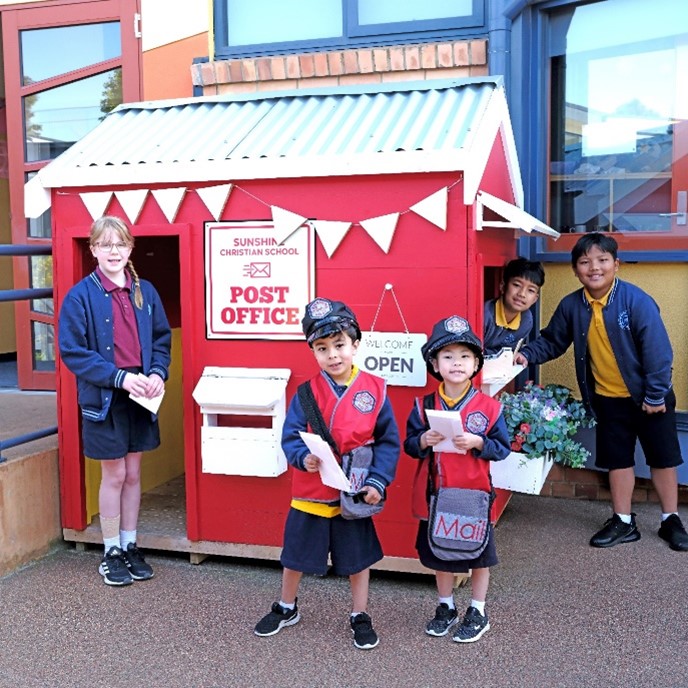Living as children of the light, loving God, loving others, loving learning
Project Based Learning – Year 5/6
The Year 5/6 class was recently challenged with the task of ‘renovating’ the school’s two cubby houses, a Post Office and Café. The goal was to transform them into a more inviting and stimulating play environment for the younger students. Renovating involved painting the interior of the cubby houses and then decorating and equipping the interior.
The process of painting the interior of the cubby houses involved students surveying the student body, engaging experts to assist with materials and techniques, and practising painting. The students created model designs with varying colour schemes and asked the other classes to vote for their favourite. They also had to pitch the finalised plans to the principal, collating their research into an engaging presentation on styling, costing, execution, identification of hazards and minimization of mess. After gaining final approval, the students consulted an expert to gain specialist painting skills before undertaking the paint job.
Equipping the interior of the cubby houses involved students planning, purchasing items, and fitting the interior with suitable play-based equipment. The 5/6 students surveyed the student body and researched items that satisfied a set criterion. They presented their findings to the principal for approval, then purchased items online. Lastly, the students were charged with assembling the items and fitting them to create an inviting environment for the younger students.
The final outcome of the projects was amazing. The 5/6 students successfully designed and created a welcoming and engaging environment which is proving to be very popular with the student community.


Project Based Learning – Year 3/4
The Year 3/4 class engaged in a project to create the best quality play dough possible. This unit was designed to incorporate science, math and literacy knowledge and skills. Initially, the students spent time evaluating the properties of the base ingredients and attributing the properties of play dough products to particular ingredients. Through a process of experimentation and adaptation the students created different batches of play dough, each of which was evaluated for quality in consistency, texture and colour.
Students then researched the cost of ingredients and calculated the cost of making one batch. With some guidance from the teacher, the students calculated the cost of making multiple batches and discovered that producing play dough in larger quantities would reduce the cost of the product. It was determined that the cost of making play dough was low enough for students to potentially sell it at a similar price to the store-bought product and still yield approximately 30% profit.
The students finally sought the opinion of experts (the Prep class) who thoroughly tested the play dough and compared the student-made batches to store-bought play dough. In a blind test, the Prep students overwhelmingly chose the student-made play dough over the store-bought play dough.
To conclude the unit, students reflected on their learning and the experience of making play dough by writing a report detailing their ‘play dough journey’.



